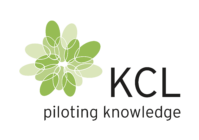Understanding Microfibrillated Cellulose
Microfibrillated cellulose (MFC) is a type of nanocellulose derived from plant fibres. It is characterised by its high surface area and unique fibrillar structure, which imparts exceptional mechanical and rheological properties. MFC is produced through mechanical processes that break down cellulose fibres into micro-sized fibrils, resulting in a material that is both lightweight and incredibly strong.
As a sustainable material, MFC is gaining traction in various industries due to its biodegradability and renewable nature. Its applications range from paper and packaging to composites and coatings. The versatility of MFC makes it an ideal candidate for enhancing the performance of various formulations, including wax dispersions.
In the context of wax formulations, MFC can significantly improve the stability and performance of the dispersion. This is particularly relevant for applications requiring high levels of hydrophobicity and adhesion, such as coatings for paper and board products.
The Role of Microfibrillated Cellulose in Wax Dispersion
Microfibrillated cellulose plays a crucial role in enhancing wax dispersion performance. One of the primary benefits of MFC is its ability to stabilise the dispersion. The high surface area and fibrillar network of MFC help to prevent the agglomeration of wax particles, ensuring a uniform and stable dispersion.
Additionally, MFC contributes to the optimal rheology of the wax formulation. The unique structure of MFC allows it to form a gel-like network within the dispersion, which improves the viscosity and flow properties. This is particularly beneficial for applications requiring precise control over the coating process, such as in the production of hydrophobic paper and board products.
Moreover, MFC acts as an adhesion promoter, enhancing the bonding between the wax and the substrate. This is especially important for biobased surfaces, where strong adhesion is required to achieve the desired level of hydrophobicity and durability.
Advantages of Using Microfibrillated Cellulose in Wax Formulations
There are several advantages to incorporating microfibrillated cellulose into wax formulations. Firstly, MFC improves the stability of the dispersion, reducing the risk of phase separation and ensuring a consistent performance over time. This is particularly important for applications where long-term stability is critical.
Secondly, the use of MFC enhances the rheological properties of the wax formulation. The gel-like network formed by MFC improves the viscosity and flow characteristics, making the dispersion easier to apply and control. This is especially beneficial for coating applications, where uniform coverage and precise application are essential.
Furthermore, MFC acts as an adhesion promoter, improving the bonding between the wax and the substrate. This results in a more durable and effective coating, which is particularly important for applications requiring high levels of hydrophobicity and resistance to moisture.
Case Studies and Applications
Several case studies have demonstrated the effectiveness of microfibrillated cellulose in enhancing wax dispersion performance. For example, in the production of hydrophobic paper and board products, the incorporation of MFC into the wax formulation has been shown to significantly improve the water resistance and durability of the coating.
In another case study, the use of MFC in a wax dispersion for food packaging applications resulted in a more stable and effective coating, meeting the stringent requirements for food contact materials. The FDA approval of the wax formulation further underscores its safety and suitability for such applications.
These case studies highlight the versatility and effectiveness of MFC in enhancing wax dispersion performance across a range of applications. Whether for industrial coatings, packaging, or other specialised uses, MFC offers a unique solution for improving the stability, rheology, and adhesion of wax formulations.
Future Trends and Innovations in Microfibrillated Cellulose Applications
The future of microfibrillated cellulose in wax formulations looks promising, with ongoing research and development efforts aimed at further enhancing its performance and expanding its applications. One area of focus is the development of new production methods to improve the efficiency and scalability of MFC production, making it more accessible and cost-effective for a wider range of industries.
Another trend is the exploration of new applications for MFC in wax formulations, such as in the development of advanced coatings and composites. The unique properties of MFC make it an ideal candidate for creating high-performance materials with enhanced mechanical, thermal, and barrier properties.
As the demand for sustainable materials continues to grow, the use of microfibrillated cellulose in wax formulations is expected to increase. With its biodegradability, renewability, and exceptional performance characteristics, MFC offers a compelling solution for industries looking to enhance the performance of their products while reducing their environmental impact.
In conclusion, microfibrillated cellulose offers significant benefits for enhancing wax dispersion performance. Its ability to stabilise the dispersion, improve rheology, and promote adhesion makes it an invaluable component in a wide range of applications. As research and development efforts continue, the potential for MFC in wax formulations and other applications is set to expand, offering new opportunities for innovation and sustainability.
